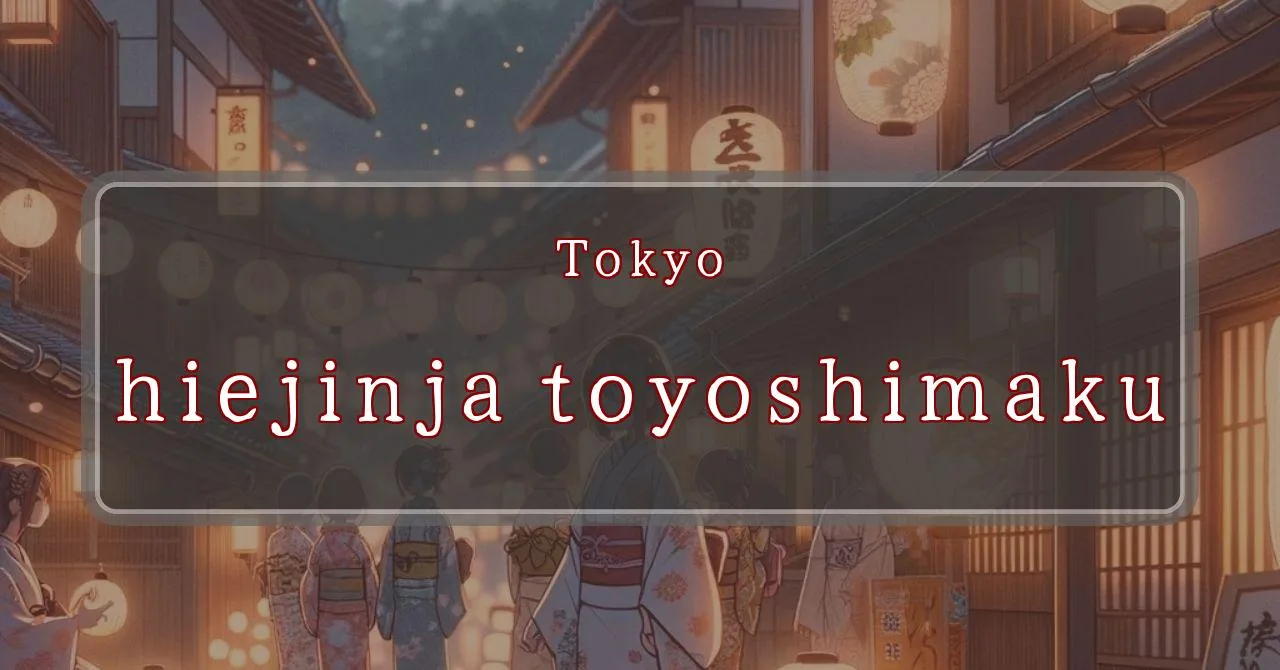Enchanting lights dance at Hie Shrine Festival
Basic Information
Hie Shrine is a Shinto shrine located in the Toshima district of Tokyo, Japan. It is dedicated to the god Ōyamagui no Mikoto, the god of mountains and agriculture.
- Address: 1-30-12 Komagome, Toshima-ku, Tokyo 170-0003
- Phone Number: 03-3941-0520
- Access: 3-minute walk from JR Yamanote Line Komagome Station or Tokyo Metro南北線 Komagome Station
- Festival Days: June 7-17, 2024
Main Events and Attractions of the Festival
The Hie Shrine Festival is a vibrant and colorful festival that attracts many visitors each year. The main events and attractions of the festival include:
Mikoshi Procession
One of the highlights of the festival is the mikoshi procession, where a portable shrine is carried through the streets of the Toshima district. The mikoshi is decorated with elaborate carvings and ornaments, and it is carried by a team of people. The procession is accompanied by music and dancing, and it is a lively and festive sight.
Kagura Performance
Kagura is a traditional Japanese dance and music performance that is often performed at Shinto festivals. During the Hie Shrine Festival, kagura is performed by a group of young women who are dressed in traditional costumes. The performance is graceful and beautiful, and it is a highlight of the festival.
Food Stalls
There are many food stalls at the Hie Shrine Festival, selling a variety of traditional Japanese foods. Some of the most popular foods include yakitori (grilled chicken skewers), takoyaki (octopus balls), and taiyaki (fish-shaped cakes filled with sweet bean paste). There are also many stalls selling souvenirs and crafts.
Bon Odori Dance
The Bon Odori dance is a traditional Japanese folk dance that is often performed during Obon, a festival that honors the spirits of the dead. During the Hie Shrine Festival, there is a Bon Odori dance performance on the evening of August 15th. The dance is performed by a group of people who are dressed in traditional costumes, and it is a lively and festive sight.
Blessings and Deities
Hie Shrine is dedicated to Ōyamagui no Mikoto, the god of mountains and agriculture. He is also known as Ōyama-tsumi-no-kami, and he is one of the oldest and most important gods in the Shinto pantheon. Ōyamagui no Mikoto is said to have created the Japanese islands and to have taught the people how to cultivate rice. He is also revered as a protector of travelers and a bringer of good fortune.
- Deity: Ōyamagui no Mikoto
- Blessings: Good fortune, prosperity, protection, bountiful harvests
Origin and History
The origins of Hie Shrine are unclear, but it is believed to have been founded in the 13th century. The shrine was originally located on Mount Hiei, a mountain northeast of Kyoto. In 1654, the shrine was moved to its current location in the Toshima district of Tokyo.
- Founded: 13th century
- Original location: Mount Hiei, Kyoto
- Current location: Toshima district, Tokyo
Tips and Notes for Visitors
Here are some tips and notes for visitors to the Hie Shrine Festival:
- Dates: June 7-17, 2024
- Location: Hie Shrine, 1-30-12 Komagome, Toshima-ku, Tokyo 170-0003
- Access: 3-minute walk from JR Yamanote Line Komagome Station or Tokyo Metro南北線 Komagome Station
- Admission: Free
- Highlights: Mikoshi procession, kagura performance, food stalls, Bon Odori dance
- Tips: Wear comfortable shoes, as you will be doing a lot of walking. Bring a camera to capture the festival’s many colorful sights and sounds. Arrive early to get a good spot for viewing the mikoshi procession and kagura performance.
Parking Information
There is no parking lot at Hie Shrine. However, there are several public parking lots in the surrounding area. Here are some options:
- Komagome Station Parking Lot: Located next to JR Yamanote Line Komagome Station. 24-hour operation. 150 yen per 30 minutes.
- Toshima Civic Center Parking Lot: Located a 5-minute walk from Hie Shrine. Open from 8:30am to 10:00pm. 300 yen per hour.
- Komagome Park Parking Lot: Located a 10-minute walk from Hie Shrine. Open 24 hours. 200 yen per hour.
Popular Stalls and Food Carts in Recent Years
| Type of Stall | Description |
|---|---|
| Takoyaki | A staple at Japanese festivals. Characterized by a crispy outside and a creamy inside. |
| Jaga Butter | A simple yet popular snack of hot potatoes lavishly topped with melted butter. |
| Baby Castella | Small castella cakes, sweet and fluffy treats enjoyed by children and adults alike. |
| Grilled Ayu with Salt | Fresh ayu fish grilled whole with salt, a savory taste of Japanese summer. |
| Shaapin | A unique gourmet item influenced by foreign cuisine, with a chewy skin wrapping the filling. |
| Okonomiyaki | A Japanese grilled dish where you often choose your own ingredients for a personalized flavor. |
| Cotton Candy | A fluffy, sweet snack that’s extremely popular with children. |
| Chocolate Banana | A banana coated in chocolate, a fun and visually appealing dessert. |
| Kushiyaki | Various types of ingredients skewered and grilled, an easy-to-enjoy snack. |
| Yakisoba | Fried noodles mixed with a special sauce, a fast food favorite in Japan. |



